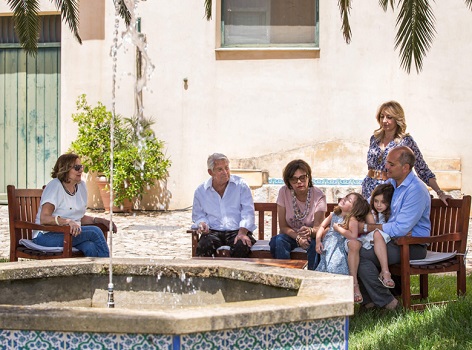Catarratto is an indigenous Sicilian grape variety, widespread mainly in the Central-Western part of the island. Put somewhat aside in past decades, it has returned in splendid form to give us fresh, fragrant wines.
Catarratto accounts for one-third of Sicily’s total vineyard area. In past centuries it was mainly used together with Inzolia (with the later addition of Grillo) to produce Marsala. Ampelographic studies distinguish two biotypes of Catarratto: the Comune and the Lucido, the former having a higher sugar content and therefore more suitable precisely for Marsala, the latter being more delicate but performing better when vinified to produce a dry white. The most salient characteristics of the grape variety are the lively acidity that gives gustatory freshness and accentuates the aromatic one, with characteristic citrus, floral aromas of orange blossom and jasmine, and officinal herbs.
We chose two farms in the province of Palermo, the first – Rapitalà – in Camporeale, active since the 1970s, and the second – Feudo Disisa – in Monreale, a historic property that entered more recently in the world of bottled wine.
recently in the world of bottled wine.
Once the exclusive property of the Counts de la Gatinais, Rapitalà has for the past 20 years or so joined the constellation of Gruppo Italiano Vini. It has vineyards in Alcamese, in the northwestern part of Sicily, and offers a wide range of labels, relying on local varieties as well as international varietals. It is one of the few wineries that can still boast a predominance of sales in the Italian market, a sign that the investments made in the past in terms of quality consistency and brand strength have been successful among the general public and enthusiasts.
 Coming to Feudo Disisa, owned by the Di Lorenzo family, for a long time it sold grapes, then at the turn of the century it started its own bottling. The winery is efficient and functional, equipped with modern technology and a large fleet of barrels. The technical direction, entrusted to Tonino Guzzo, is steadily raising the already good level of the winery, with wines mainly from native grape varieties. Truly very good is the Lu Bancu, pure Catarratto Monreale Doc, which, however, comes out (albeit slightly) of the 15 euro shelf ceiling that characterizes this column. We chose Chara, a blend of Carattatto and Inzolia. Of this company we also point out the excellent and wide production of oil.
Coming to Feudo Disisa, owned by the Di Lorenzo family, for a long time it sold grapes, then at the turn of the century it started its own bottling. The winery is efficient and functional, equipped with modern technology and a large fleet of barrels. The technical direction, entrusted to Tonino Guzzo, is steadily raising the already good level of the winery, with wines mainly from native grape varieties. Truly very good is the Lu Bancu, pure Catarratto Monreale Doc, which, however, comes out (albeit slightly) of the 15 euro shelf ceiling that characterizes this column. We chose Chara, a blend of Carattatto and Inzolia. Of this company we also point out the excellent and wide production of oil.
To read the wine sheets, click on the name.
The opening photo is taken at the Cantine Barbera website, which we thank for clarity



